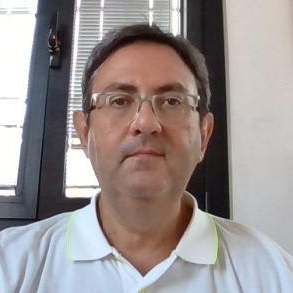Protection and Conservation of Cultural Heritage: A Role for Remote Sensing
A special issue of Remote Sensing (ISSN 2072-4292). This special issue belongs to the section "Engineering Remote Sensing".
Deadline for manuscript submissions: closed (31 October 2021) | Viewed by 12958
Special Issue Editor
Interests: geodesy; terrestrial laser scanner (TLS); structure from motion (SfM); close-range photogrammetry (CRP); GNSS; DinSAR; gravimetry
Special Issues, Collections and Topics in MDPI journals
Special Issue Information
Dear Colleagues,
Nowadays, remote sensing and proximal sensing contactless non-destructive techniques (NDT) are becoming more and more important for the characterization and monitoring of the state of conservation in the protection of monuments, ancient buildings and cultural heritages. For this purpose, the synergistic application of remote and proximal sensing methods is of paramount importance. Terrestrial laser scanner (TLS), structure from motion (SfM), space and terrestrial synthetic aperture radar (SAR), SAR tomography, X-ray tomography, scanning electron microscopy (SEM), optical microscopy (OM), petrography, high frequency ultrasound tomography, ground penetrating radar (GPR), global navigation satellite system (GNSS) and unmanned aerial system (UAS) are examples of methods to 3D model, diagnose and monitor the conservation state of monuments and ancient artifacts using, as far as possible, non-invasive approaches. This Special Issue is dedicated to all experts of remote and proximal sensing non-destructive techniques that can be applied to the preservation and restoration of cultural heritage throughout the world. Multi-technique and single method approaches are welcome for publication in this Special Issue of Remote Sensing with different theoretical and practical methods applied to single and different case studies relative to the solution of cultural heritage monitoring, preservation and restoration problems.
Dr. Giuseppe Casula
Guest Editor
Manuscript Submission Information
Manuscripts should be submitted online at www.mdpi.com by registering and logging in to this website. Once you are registered, click here to go to the submission form. Manuscripts can be submitted until the deadline. All submissions that pass pre-check are peer-reviewed. Accepted papers will be published continuously in the journal (as soon as accepted) and will be listed together on the special issue website. Research articles, review articles as well as short communications are invited. For planned papers, a title and short abstract (about 100 words) can be sent to the Editorial Office for announcement on this website.
Submitted manuscripts should not have been published previously, nor be under consideration for publication elsewhere (except conference proceedings papers). All manuscripts are thoroughly refereed through a single-blind peer-review process. A guide for authors and other relevant information for submission of manuscripts is available on the Instructions for Authors page. Remote Sensing is an international peer-reviewed open access semimonthly journal published by MDPI.
Please visit the Instructions for Authors page before submitting a manuscript. The Article Processing Charge (APC) for publication in this open access journal is 2700 CHF (Swiss Francs). Submitted papers should be well formatted and use good English. Authors may use MDPI's English editing service prior to publication or during author revisions.
Keywords
- 3D-Modelling
- Non-Destructive Techniques (NDT)
- Non Invasive Diagnostics
- Ultrasound Tomography
- Petrographic Analisys
- Scanning Electron and Optical Microscopy (SEM, and OM)
- X-Ray Tomography
- Ground Penetrating Radar (GPR)
- Terrestrial Laser Scanner (TLS)
- Structure from Motion (SfM)
- Close Range Photogrammetry (CRP)
- Global Navigation Satellite System (GNSS)
- Synthetic Aperture Radar (SAR) Tomography





